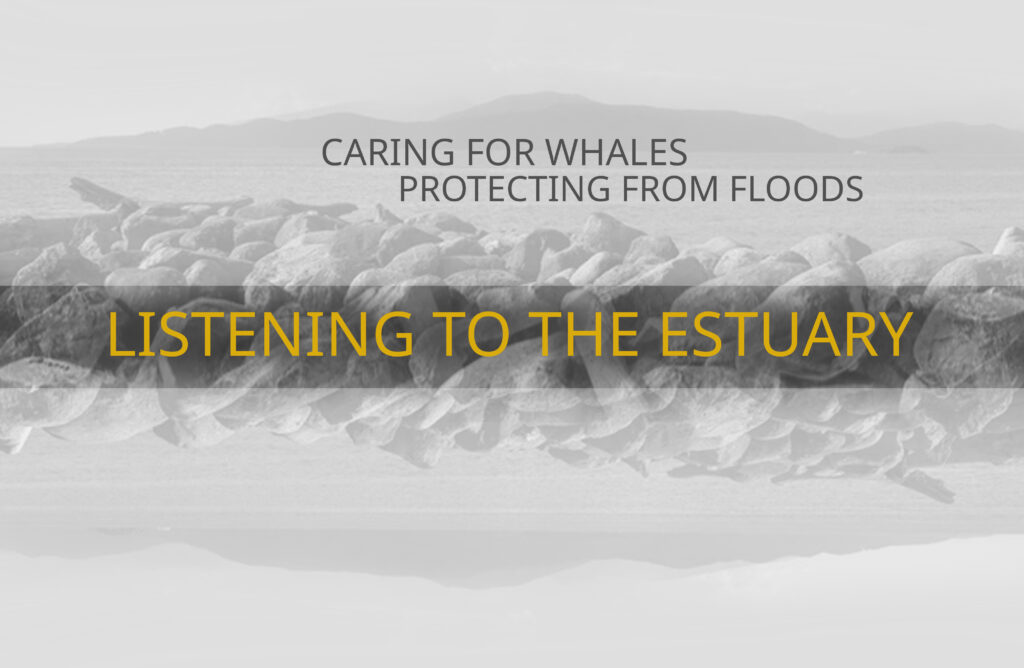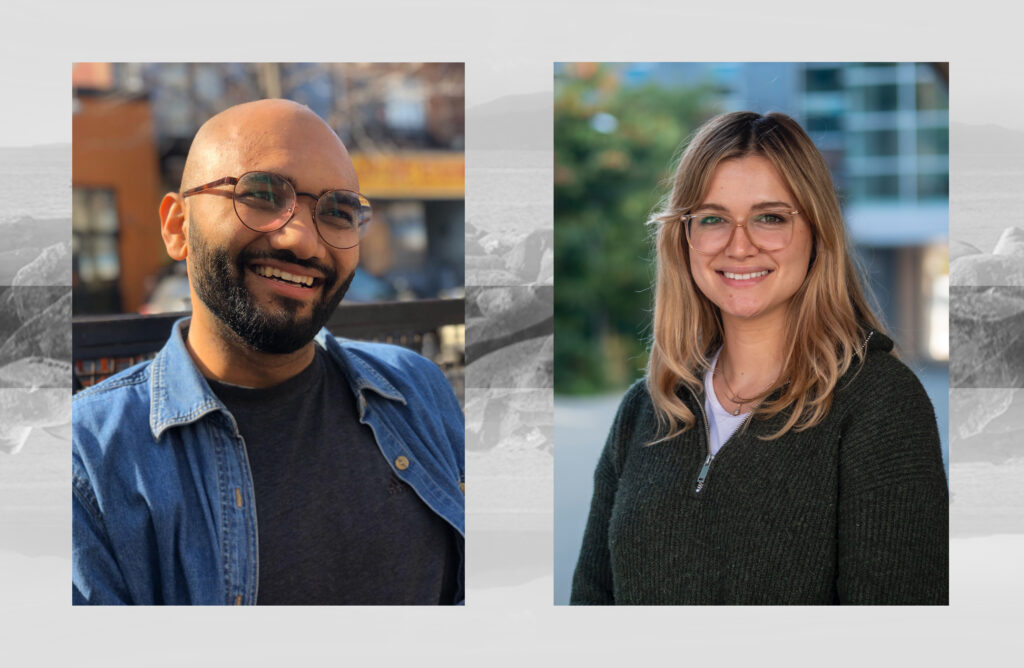Listening to the Estuary
Join us on August 26th for Session III of Foreshore Immersive: Caring for Whales, Protecting from Floods and Listening to the Estuary.
In this session, Fraser Estuary Research Collaborative (FERC) scholars, Tirath Dave and Kim St. Pierre will discuss their current Fraser Estuary related research and work. Over the past few months, Kim St. Pierre has been exploring the growing issue of underwater noise pollution and ways to reduce threats and disturbances for endangered Southern Resident Killer Whales, this project is supported by the WWF (World Wildlife Fund). Tirath Dave will share the work he has completed that has been supported by the Sitka Foundation – a feasibility study and comprehensive map detailing nature-based flood mitigation solutions along the Fraser.
Tirath Dave, B.A.Sc, P.Eng (ON), is an Indo-Canadian settler who is goofy, forever curious, and open to learning. He’s currently in the midst of a mild career shift as he transitions from his background in geological and environmental engineering for large corporations to one that aligns with his values of community prosperity and balance with the land and waters that sustain us. Currently, Tirath is pursuing the Master of Land and Water System on Musqueam lands at UBC and working with the Stó:lō Research and Resource Management Centre (SRRMC) in the flood mitigation realm. Tirath enjoys ultimate frisbee, walks, camping, and music festivals.
Kim St-Pierre is a graduate student in the Master of Land and Water Systems at UBC. She is a french speaking white settler, born in beautiful Quebec City. In her free time, she enjoys spending time with her dog, Mali, spending time outdoors, scuba diving, and martial arts. Her passion for the preservation and recovery of the Southern Resident Killer Whale was sparked while researching and writing an undergraduate thesis on cetacean culture. This interest prompted her to work on regulatory research to inform policy options to mitigate small vessel disruption of killer whale foraging in the Fraser Estuary as part of the FERC and in collaboration with WWF.
Fraser Estuary Radio Launch
This session will also serve as the launch for Fraser Estuary Radio, a 24 hour program of audio curated by FERC Sustainability Scholar Viola Provost that is part of Other Sights’ Currents and Waves Platform. Fraser Estuary Radio explores the critical importance of this waterway in sustaining all life in the region. Playing weekly on Tuesdays over the duration of the coming year, listeners can enjoy the voices of orcas, and migrating birds, hear estuary related interviews, conversations, podcasts, performances, poetry and music. Viola will expand on her curatorial approach to the project and highlight some special programs to consider tuning into. www.currentsandwaves.ca/FER-about
Viola Provost is a German-Canadian researcher and interdisciplinary artist. She is currently pursuing a Ph.D. at the University of British Columbia in the Business, Technology, and Sustainability (BST) Lab, researching the influences of Environmental Communication on Social Media. Viola’s work embraces the nexus of science, technology, and art, with a profound dedication to fostering co-creative dialogues between science and society. She holds a B.Sc. in Biology from Ludwig Maximilian University, Germany, and an M.Sc. in Freshwater and Marine Biology from the University of Amsterdam, along with a Major in Science Communication from Vrije University, The Netherlands. She exhibited her artworks at the Sansaro Art Box and at Die Färberei in Munich, Germany. In her free time, she enjoys swimming, diving, skiing, and playing the violin.
FORESHORE IMMERSIVE
The “foreshore” describes the land along the edge of the water that is both submerged and revealed by the tide. Very simply, it is the wet part of the beach, a place of unclear jurisdiction, and thus of contestation, friction, and constant movement. Those who dwell in this zone must continually adapt to a changing environment. The foreshore conjures histories specific to this region: narratives of trade and exchange, habitation and nourishment, resistance and violent erasure, and evokes the emergence of possible futures. The foreshore has served as a fertile operative metaphor for Other Sights’ thinking for some years, developing into several programming strains. These include the Foreshore series of research presentations (2016-18), to public programs associated with our commissioning activities.
Foreshore Immersive considers the potential of this zone in the context of response and adaptation to the pandemic, colonisation, climate crises, collective care and trauma.
Contemporary public art in British Columbia and beyond requires the creative vision and leadership of artists, writers and thinkers attending to the conditions of working in unceded territories, and to develop and strengthen partnerships between many individuals and organizations grappling with the uncertainties and challenges of the present moment. Foreshore Immersive, assesses the new conditions of public spaces at this phase in the pandemic, the ongoing urgencies of the climate crisis and the resurgence of Indigenous-led forms of scholarship and leadership. Artists, writers and others whose work exists philosophically, metaphorically and physically within the foreshore recognize the abundant potential of this interstitial space. In gathering at the foreshore, guest convenors will use the platform to network, share research, collaborate towards new workshops and partnerships and host discussions that will draw our communities of interest into relation on Musqueam, Kwantlen, and Tswwassen territory. www.theforeshore.org/
Event partner:
BLUE CABIN FLOATING ARTIST RESIDENCY is a mobile artist residency located in Vancouver British Columbia on Canada’s Pacific Coast. Currently located on a floating platform at Imperial Landing in Steveston Village, the residency gives the artist a unique perspective on the city from the water. The deckhouse is an off the grid home with modern appliances and comforts and a 360-degree view of the harbour, while the historic cabin acts as a studio for the artist’s activities. Located on the foreshore in close proximity to shopping and amenities, the Blue Cabin provides a home base in this waterfront community within the City of Richmond. The six to eight week time frame allows the artist time for solo production as well as opportunities for engagement within the community. www.thebluecabin.ca

